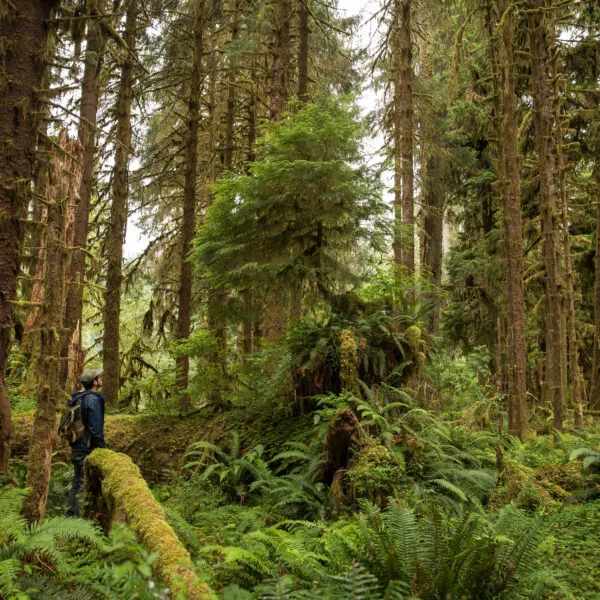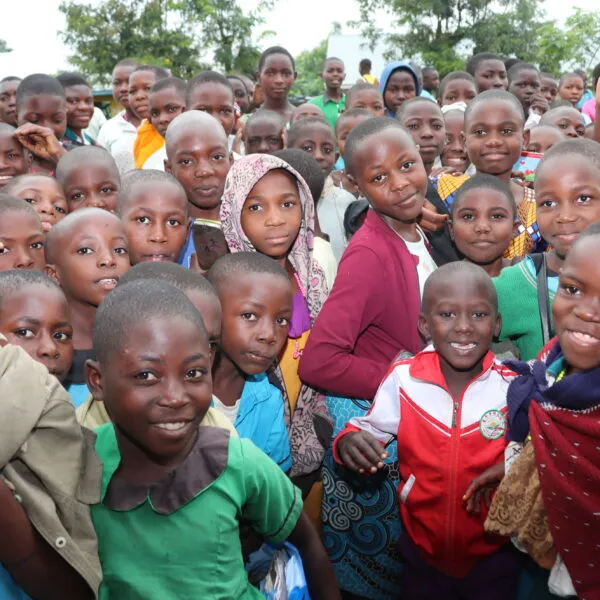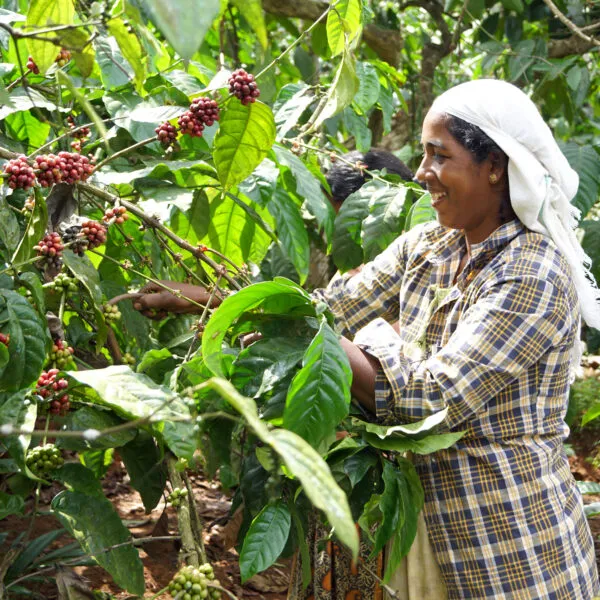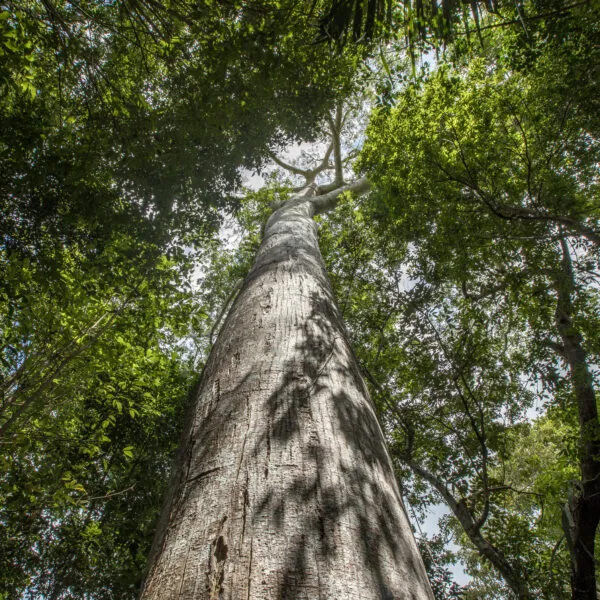Sitting in the heart of the Congo Basin, the 36,000 square kilometer Salonga National Park (SNP) is the largest protected area of dense rainforest on the African continent. The SNP is divided into two large sectors by a 45 km wide, 240 km long corridor called the Monkoto Corridor. Its largely intact lowland rainforest ecosystem is a treasure trove of biodiversity with thousands of species of tropical plants, mammals, fish, and birds, including endangered species like the bonobo, forest elephant, and pangolin.
This corridor is also home to around 130,000 people, many of whom live in the northwest part. With high poverty rates in this region, people have become increasingly dependent on the area’s natural resources for their livelihoods. In fact, the collection of natural resources now accounts for 95 percent of the subsistence and commercial activities of the local population. The hunting of fragile species and overfishing of rivers pose the most serious threats to the area’s wildlife, but poaching is also common. This is typically done by groups from outside the area, sometimes with the participation of local communities and officials. Common targets are elephants, which are hunted for their ivory tusks, and bonobos and grey parrots, which are captured and sold illegally. Agriculture—both small and large-scale coffee, palm oil, corn, rice, and cassava farms—have also led to deforestation around villages and roads throughout the corridor.
Our work to stop deforestation in Guatemala has shown us the power of community forestry in combatting issues such as these. Community forestry gives local communities the opportunity to earn a living while protecting the forest. They do this by developing sustainable forest enterprises, such as harvesting and selling “non-timber forest products” like nuts and palm fronds, in designated areas of the forest known as “forest concessions.” Communities can also extract timber for export in these areas according to rigorous standards. The Democratic Republic of the Congo’s Community Forestry Strategy is currently in its five-year pilot phase. During this period, we are working with the government and other partners to test different approaches to community forestry through several officially recognized pilot projects.
Location
Central Democratic Republic of the Congo:
- Monkoto Corridor
- Wafanya area in Tshuapa Province
Period
July 2020 – June 2025
Partner communities
This project will directly benefit 1,500 households, particularly:
- members of the Nkundu ethnic group (also known as Bantu), representing the majority of Monkoto Corridor inhabitants
- members of the highly marginalized Indigenous Batwa group, who are often recruited to assist in poaching practices
- women who are particularly disadvantaged by cultural and economic constraints and have limited access to education
- youth who are also often used in poaching practices and face limited opportunities
Project objectives: Setting up forest concessions and helping communities find alternative sources of income
The project will consist of two main parts:
- Part 1: Laying the foundations for community-based natural resource management
Alongside our partners, the Rainforest Alliance will assist local communities in submitting legal requests for the attribution of forest concessions. Upon attribution, the project will facilitate the establishment of community governance bodies, as well as develop participatory land use management plans and rules for the use of natural resources. - Part 2: Developing sustainable livelihood alternatives
Next, the project will help local communities find and develop other income-generating activities to reduce pressures on the wildlife and forests of the Monkoto Corridor and SNP. Those include sustainable, higher-yielding agriculture for food crops and cash crops, intensified livestock and fish farming to reduce local demand for fish and bush meat in the park, and the development of micro-enterprises such as the processing of agricultural and non-timber forest products. Support and training will be delivered by local NGOs and farmer groups to 1,500 households throughout the Monkoto Corridor, with households selected by local governance bodies. We will also help women’s associations improve their ability to support communities in natural resource management and in developing alternative, income-generating activities.
Desired impacts: less deforestation and greater opportunities
By the end of the project, we aim to achieve three key outcomes:
- Protected land and forests
Altogether, project efforts will contribute to bringing 90,000 hectares of community forests and 90,000 hectares of land under more sustainable management, representing one-fifth of the Monkoto Corridor and Wafanya area. The project will also support the implementation of land use management plans on an additional 90,000 hectares of land in those communities. - Higher incomes—in turn, reducing pressure on natural resources
By developing sustainable livelihood alternatives, 1,500 households will improve their incomes, and as a result, reduce pressures on the wildlife and forests of the Monkoto Corridor and SNP. - More women and youth in decision making
Throughout the project, special attention will be paid to women and youth, ensuring that at least 30 percent of women participate in decision-making processes and awareness activities.
Funders
The Global Environment Fund
Implementing partners
- UN Environment Program
- The Democratic Republic of the Congo’s Ministry of Environment and Sustainable Development
- Action d’Aide Sanitaire et de Développement aux plus Démunis
Rainforest Alliance contact
Serge Alain Mbong Ekollo, country director Democratic Republic of the Congo
smbong@ra.org




